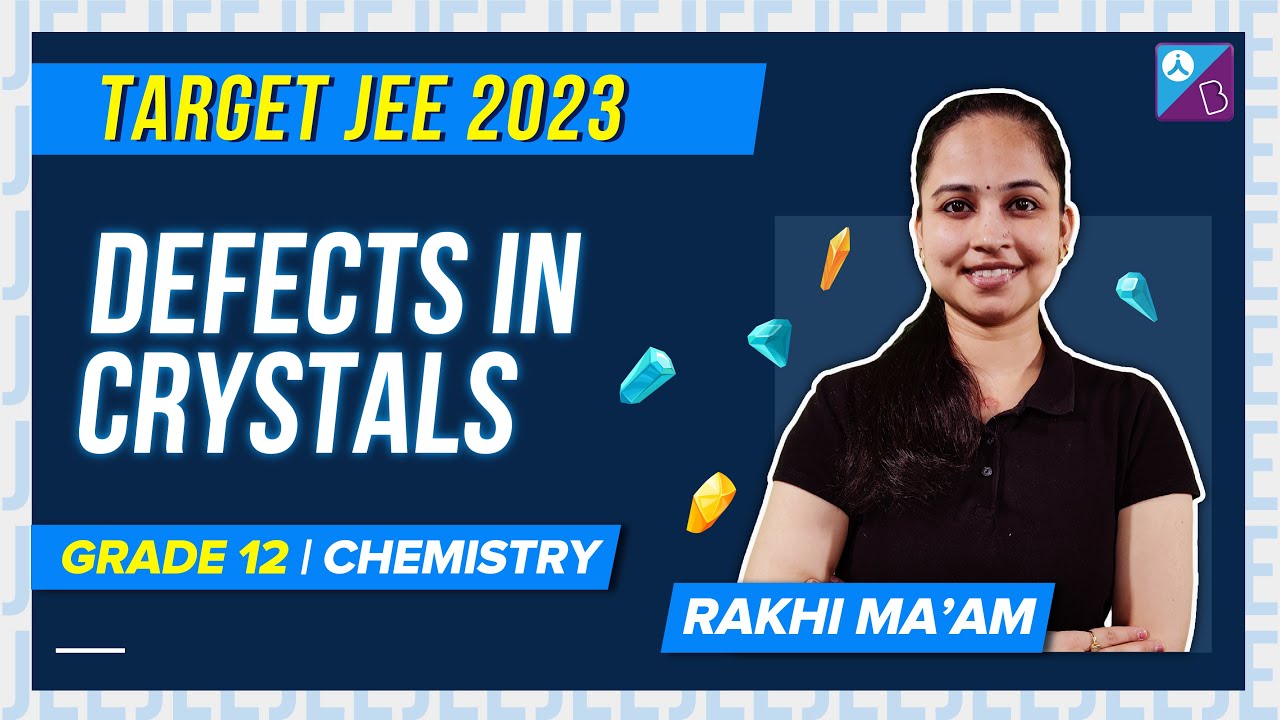Solids are formed from many small crystals. However, during the process of crystallization, the defect in solids occurs due to the fast or moderate rate of formation of crystals. Defects, in general, are defined as those in which there will be irregularities in the arrangements of constituent particles. On the basis of irregular arrangement, the defect may be a point or line defect.
Download Complete Chapter Notes of The Solid State
Download Now
In an ideal crystal, when there are any irregularities of arrangement around any point or any atom, it is said to be a deviation point defect. Likewise, when there is any deviation of arrangement in the entire row of lattice points of crystals, such type of defect will be a line defect. We will learn about all types of defects in solids in this lesson.
Table of Contents
- Types of Defects in Solids
- Stoichiometric Defect
- Schottky Defect
- Frenkel Defect
- Impurity Defects
- Non-stoichiometric Defects
- Metal Deficiency Defect
Types of Defects in Solids
As we know, according to the third law of thermodynamics, at absolute 0 K temperature, any substance will be perfectly crystalline, but on increasing temperature, defects in solids are created, which are classified into the following three types:
- Stoichiometric defects
- Non-Stoichiometric defects
- Impurity Defects
Also Read: Classification of Solids Based on Crystal Structure
Stoichiometric Defects
The defect in which the stoichiometry of the compound remains the same, as shown by their chemical formula. It is also called an intrinsic or thermodynamic defect. They are further classified into two types:
- Vacancy defect: (Vacant sites in the lattice)
- Interstitial defect: (Constituent particles move to the interstitial site of the lattice)
Both vacancy and interstitial defects are only for non-ionic solids. Ionic solids, which maintain the neutrality of the crystal, are shown by Frenkel and Schottky defects.
Schottky Defects
This defect occurs due to the missing of the same number of cations and anions from the lattice site. This type of defect is shown by that substance, which has high coordination number.

Schottky defect generally occurs in ionic compounds in which the radius ratio of cation and anion [r+/r–] is not far below unity. It is a kind of vacancy defect where an equal number of cations and anions are missing but maintain the neutrality of the crystal. The density of such a type of crystal decreases. Due to the presence of ions, this crystal can conduct electricity to a small extent. For example, NaCl, CsCl, KCl, AgBr etc.
Frenkel Defect
In this type of defect, some cations are missing from their lattice site and occupy the interstitial site of the lattice. This type of defect is shown by those substances which have low coordination numbers. The closeness of like charges tends to increase the dielectric constant of the crystal.

Frenkel defect is a kind of dislocation defect or interstitial defect in which the smaller ion generally cation dislocate from their position to occupy the interstitial site of the lattice or crystal. The density of these types of crystals remains the same because there is no movement of ions outside the crystal. This defect is exhibited in those ionic compounds in which the radius ratio[r+/r–] is low. For example, ZnS, AgBr, AgI, AgCl etc.
Note: AgBr shows both Frenkel and Schottky defects.
Frenkel and Schottky Defect

Impurity Defects
In the molten state, NACL contains a small amount of SrCl2 in the form of impurity in the crystal. Due to the presence of SrCl2, some site of Na+ ion is occupied by Sr2+. To maintain the neutrality of the crystal, one Sr2+ replaces two ions of Na+, and the remaining site of Na+ will be vacant. For example, CdCl2 and AgCl.

Non-stoichiometric Defects
This defect is shown by compounds of d-block elements of the periodic table. These defects are classified as metal excess defects, which are again of two types. They are as follows:
Metal excess defect due to anionic vacancy
When a compound has excess metal ions, if an anion is absent from the lattice site there, it creates a void while is there occupied by an electron. This type of defect is shown by alkali metal halides like NaCl, KCl, and LiCl.
When alkali metal halides are heated in an atmosphere of vapour of the alkali metal, anion vacancies are created. This anion is then diffused to the surface of the crystal and combined with newly generated metal cations. The electron is lost by the metal atom, which then diffuses the crystal and occupies the anionic vacancy site, and forms F-centres inside the crystal. These F-centres give different colours, like NaCl gives a yellow colour. KCl gives a violet colour, and HCl gives pink colour.
Metal excess defect due to the presence of interstitial cation
It is when an excess positive ion is located in the interstitial site. This type of defect is shown by ZnO. When ZnO is heated, it loses oxygen reversibly. The excess Zn2+ ions are occupied in the interstitial sites to for maintaining neutrality, electrons are enclosed in the neighbouring interstitial sites. On heating, ZnO turns yellow colour by losing oxygen.

Metal Deficiency Defect
In this defect, some cations are missing from the lattice site, and to maintain its electrical neutrality, another remaining cation increases its valency. For example, FeO, which is found with a composition of Fe0.95 O, may actually range from Fe0.93O to Fe0.96O.
In the crystal of FeO, some Fe2+ cations are missing, and the loss of positive charge is made up by the presence of the required number of Fe+3 ions.

Defects in Crystals


Comments